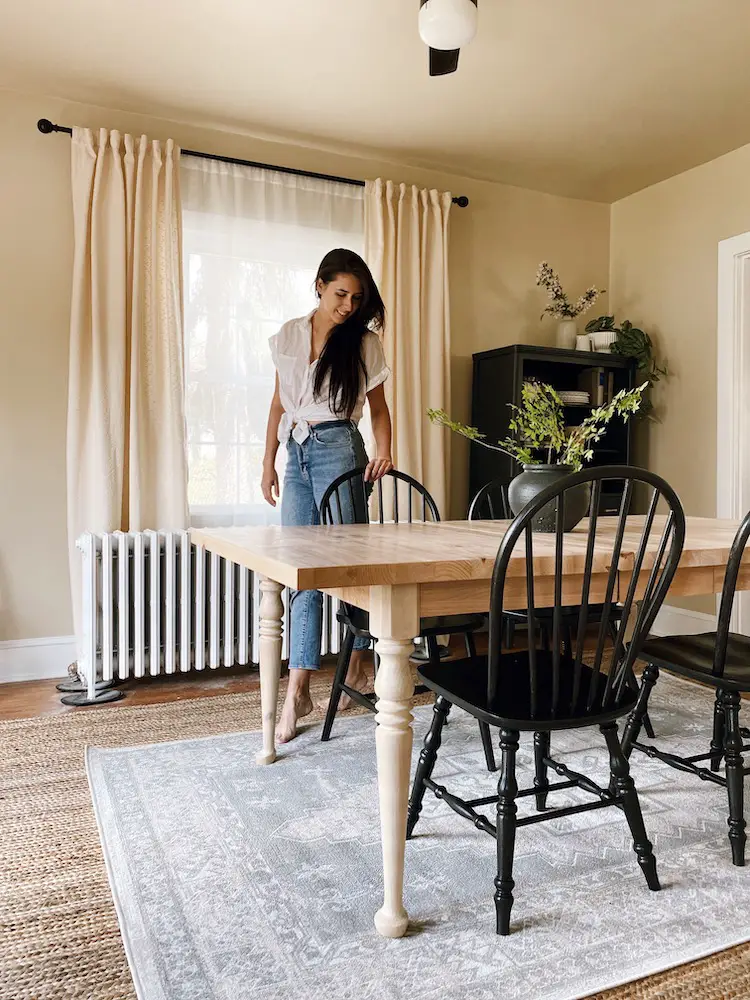An In-depth Take A Look At Table Leg Styles: Locating the Suitable Suit
Choosing the best dining table leg design is important for both visual charm and sensible capability. Typical four legs provide classic style and security, while the pedestal base gives raised legroom and a modern-day look. For those with bigger tables, trestle legs make sure tough assistance, whereas barrette legs introduce a mid-century modern ambiance with their minimal style. The x-shaped legs mix contemporary style with boosted security. Each of these choices brings special advantages, making the selection greater than just a matter of preference. Discover even more to find which design perfectly matches your eating space and lifestyle.
Traditional 4 Legs
Amongst the numerous types of dining table leg styles, the traditional four-leg style continues to be a classic selection for many families. 4 legs give balanced support, making certain the table continues to be secure and qualified of birthing significant weight (dining room table legs).
From an aesthetic point of view, the conventional four-leg design can be conveniently adapted to different interior designs. Whether crafted from wood, metal, or a mix of products, these legs can be delicately sculpted, smooth and minimalistic, or anything in between. Their flexibility allows them to enhance both rustic and contemporary settings effortlessly.
Additionally, the simple structure of the four-leg layout assists in ease of activity and positioning within a space. Unlike more facility bases, this style minimizes blockages, offering enough legroom for restaurants. In summary, the standard four-leg dining table leg design marries sustaining style with functional functionality, making it a sharp choice for those looking for both form and feature in their eating furniture.
Stand Base
Commonly celebrated for its sophisticated and space-efficient design, the stand base is a recognized option to the traditional four-leg configuration in eating table leg designs. This distinctive base commonly features a solitary main column supporting the table top, which can differ in type, from ornately sculpted wood to smooth, modern-day metal. One of the main advantages of the pedestal base is its capability to take full advantage of legroom and seating flexibility. Without corner legs, restaurants are paid for better freedom of motion, making it a perfect option for round and oblong tables that promote more intimate and comprehensive celebrations.
Additionally, the stand base's main assistance can take care of significant weight, allowing for using heavier tabletops, such as marble or thick hardwood. This strength coupled with its aesthetic adaptability makes the stand base a prominent option in both standard and modern interior settings. It can perfectly integrate with various design themes, from classic elegance to minimalist modernity. The central column itself provides a canvas for intricate designs and imaginative expressions, including a component of aesthetic rate of interest beneath the table. In recap, the stand base integrates functionality with style, making it a refined and sensible choice for diverse eating environments.
Trestle Legs
Trestle legs give a durable and timeless foundation for dining tables, defined by their straight cross-bracing and strong assistance beams. Stemming from medieval times, this style has advanced yet retained its important framework, making it a perennial fave in both standard and contemporary setups. The central trestle light beam, typically sustained by two or even more vertical blog posts, provides exceptional security, allowing for larger table sizes without the need for added legs.
A significant benefit of trestle leg visit site tables is the ample legroom they provide. Unlike tables with 4 corner legs, the lack of obstructions at the table's sides gives unimpeded area for chairs and diners, improving comfort and access. This makes trestle tables perfect for fitting bigger gatherings, whether in a dining space or a reception hall.
The aesthetic convenience of trestle legs is noteworthy. Available in a range of products such as timber, steel, and composite, they can be finished to enhance a wide variety of interior styles. From rustic farmhouse to smooth modern-day styles, trestle legs can be tailored to match individual tastes. Their her response enduring charm and practical advantages make trestle legs a compelling choice for those seeking both style and practicality in their dining table.
Barrette Legs

The charm of barrette legs lies in their simpleness and versatility - dining room table legs. Offered in an array of materials, consisting of steel and brass, they can be finished in various shades to complement different interior designs. Whether coupled with a rustic wood table top or a contemporary glass surface, barrette legs easily mix functionality with a touch of vintage charm
Toughness is an additional noteworthy function of barrette legs. Regardless of their fragile appearance, these legs are engineered to birth significant weight, ensuring the table stays steady and safe. Furthermore, they are reasonably very easy to mount, making them a popular choice for DIY enthusiasts and expert furnishings manufacturers alike.
X-Shaped Legs

Created from materials such as steel, timber, or a mix of both, X-shaped legs can be tailored to match different layout preferences. Steel legs usually provide a streamlined and industrial feel, perfect for loft-style apartments and contemporary eating spaces. On the other hand, wood X-shaped legs supply a warmer, much more rustic allure, suitable for farmhouse or eclectic insides. The flexibility in products allows property owners to tailor their table to better fit their overall layout plan.
Additionally, the design behind X-shaped legs makes certain also weight circulation, minimizing the risk of wobbling and enhancing toughness. This makes them specifically fit for bigger eating tables that require added assistance. Essentially, X-shaped legs mix useful engineering with modern looks, making them an ageless option for diverse dining environments.
Final Thought
A thorough understanding of dining table leg styles exposes the unique qualities and advantages of each style. Trestle legs ensure durable support for larger tables, and barrette legs present a mid-century modern-day aesthetic.
Comments on “Discover the Best Products for Dining Room Table Legs for every single Design”